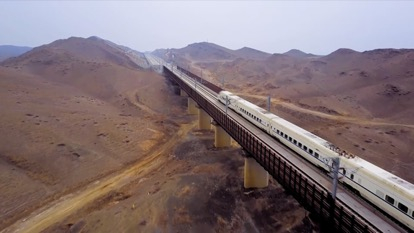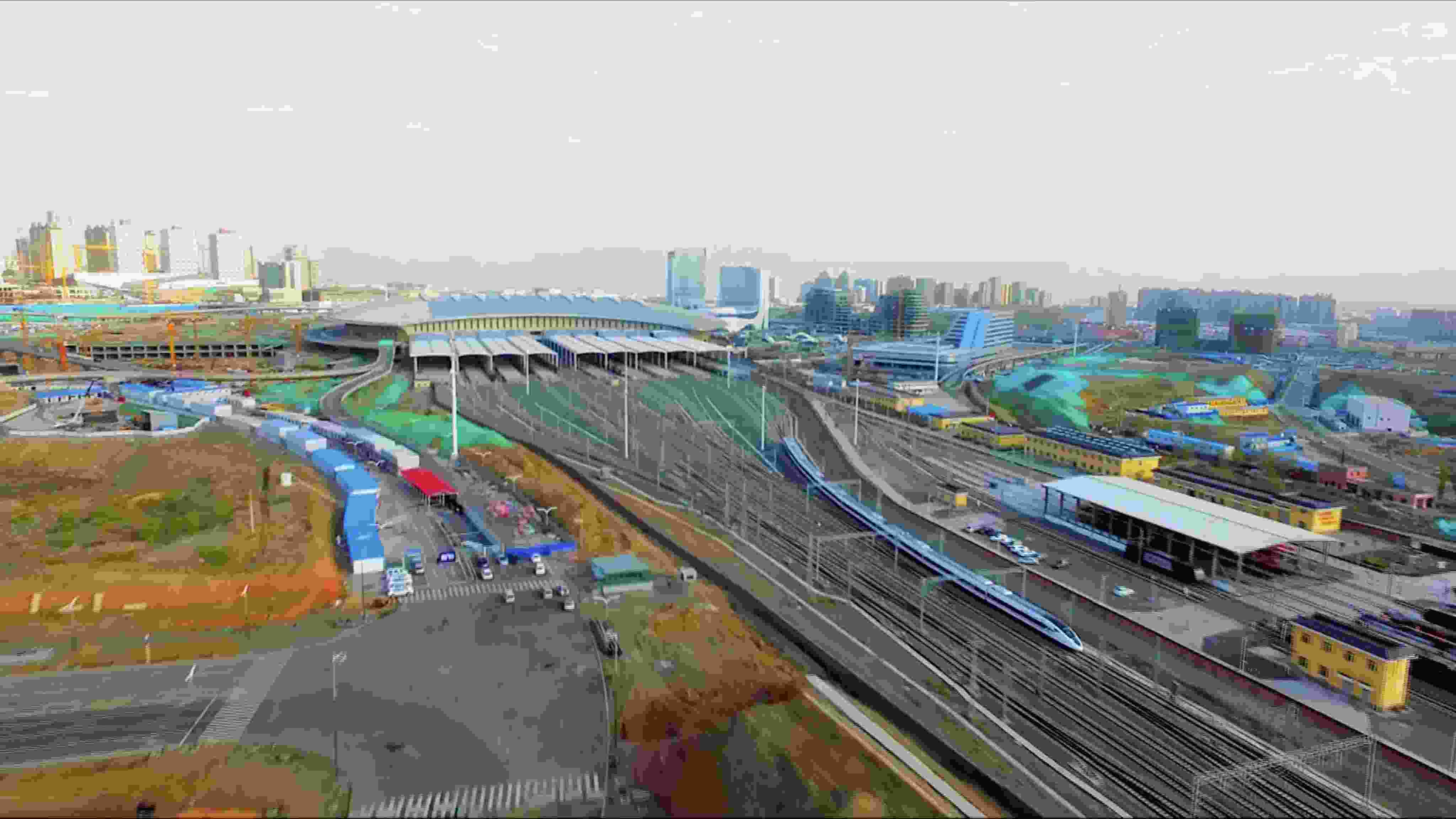
Technology
22:11, 06-Mar-2019
High-speed railway speeds up Xinjiang development
CGTN
05:50

The Lanzhou-Xinjiang high-speed railway, stretching through the high-altitude Qilian Mountain range, an ancient section of the Great Wall and five strong-wind zones, began operating in 2014.
It is the first long-distance high-speed line in China's western region connecting Lanzhou, the capital city of northwest China's Gansu Province, with Urumqi, the capital of the Xinjiang Uygur Autonomous Region. It has brought increased travel possibilities to residents along the line.

A high-speed train leaves Urumqi Station. /Screenshot
A high-speed train leaves Urumqi Station. /Screenshot
Construction work began on November 4, 2009 and the 1,77l km long high-speed rail took four years to complete. Due to the special geographical environment and climate that the line passes through, railway engineers had to overcome multiple technical challenges during the construction.
The Lanzhou-Xinjiang High-speed Railway runs through an expansive windy area at a length of 580 km, which is divided into five wind zones. To address the impact of windstorms, a total of 462 km long windproof walls was built and the high-speed electric multiple unit (EMU) trains on the line are wind-resistant and sand-proof.
The engineers also designed a set of emergency management system for the command and dispatch console in response to emergency. The line can travel at normal speed in the wind below the rank of category 10. The highest traveling speed in wind zones can reach 210km/h. At such a high speed, Lanzhou-Xinjiang High-speed Railway is the only known line in the world that can travel against such strong winds.

The traveling speed of the high-speed EMU trains in wind zones can reach 209 km/h. /Screenshot
The traveling speed of the high-speed EMU trains in wind zones can reach 209 km/h. /Screenshot
The Lanzhou-Xinjiang High-speed Railway has served for more than 20.17 million passengers in the past four years. This year marks the 5th anniversary of the railway's operation. It is expected to bring more vigor to western Chinese cities.

SITEMAP
Copyright © 2018 CGTN. Beijing ICP prepared NO.16065310-3
Copyright © 2018 CGTN. Beijing ICP prepared NO.16065310-3